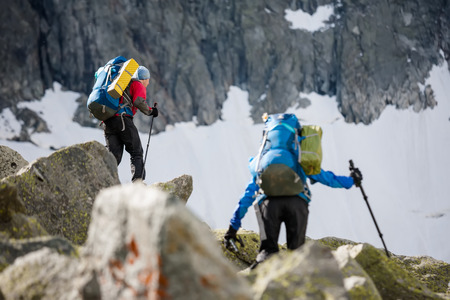Understanding Britains Unpredictable Weather
If you’ve ever heard the phrase “four seasons in one day,” you’ll know it’s more than just a saying in Britain—it’s a lived experience for every walker, rambler, and outdoors enthusiast. The British climate is famously fickle, presenting an honest challenge that’s as much a part of the landscape as rolling hills and ancient woodlands. One moment, you’re setting off under leaden skies with a steady coastal drizzle dampening your spirits; the next, you find yourself peeling off layers as the sun bursts through unexpectedly. This constant shift can be both exhilarating and exasperating. From windswept moorlands to patchwork fields and urban towpaths, walkers must be prepared for anything: biting winds that cut through even the sturdiest jackets, thick fogs rolling in across dales, sudden downpours that saturate footpaths, or unseasonal warmth that leaves you searching for shade. These abrupt changes are not merely inconvenient—they influence safety, comfort, and enjoyment on every outing. Understanding this unpredictability isn’t just about checking the weather app before you head out; it’s about respecting Britain’s atmospheric quirks and preparing accordingly. For those who venture outdoors, mastering layering and selecting the right kit is not just good advice—it’s essential for enjoying everything the British countryside has to offer, regardless of what the sky throws at you.
2. The Fundamentals of Layering: A Practical Breakdown
If you’ve ever set off for a walk in Britain, you’ll know the weather can change in a heartbeat. Engineering your kit for versatility isn’t just sensible—it’s essential. The art of layering allows walkers to adapt quickly, stay comfortable, and get the most out of every mile, no matter what the skies decide. Let’s break down each layer, using advice that’s stood the test on everything from Dartmoor to the Yorkshire Dales.
Base Layer: Moisture Management
The base layer sits closest to your skin and is all about wicking away sweat to keep you dry. Cotton is out—once wet, it stays wet. Instead, opt for synthetic fibres or fine merino wool which work efficiently even when damp. British walkers often swear by long-sleeve merino tops for year-round comfort.
| Material | Pros | Cons |
|---|---|---|
| Synthetic (e.g., polyester) | Dries quickly, affordable | Can smell after repeated use |
| Merino wool | Warm when wet, odour resistant | More expensive, less durable over time |
Mid Layer: Insulation That Breathes
Your mid layer traps warmth but must allow excess heat and moisture to escape—a classic British fleece or a light insulated jacket fits the bill. On milder days, a windproof gilet adds core warmth without bulk. For flexibility, many experienced hikers carry both a lightweight fleece and a packable synthetic jacket so they can layer up or down as conditions dictate.
Typical Mid Layer Choices:
- Microfleece pullover (year-round favourite)
- Synthetic insulated jacket (reliable in damp conditions)
- Lightweight down jacket (best for cold, dry spells)
Outer Layer: Weather Protection
The outer shell shields you from rain and wind—the two great British constants. Waterproof-breathable jackets with fully taped seams are standard kit, but pay attention to features like pit zips for ventilation and adjustable hoods that fit over hats or helmets. Don’t forget waterproof trousers if heavy showers are likely.
| Type of Outer Shell | Best Use | Drawbacks |
|---|---|---|
| Hard shell (e.g., Gore-Tex) | Torrential rain, high winds | Noisy, sometimes stiff |
| Soft shell | Breezy, drizzly days; more breathable | Not fully waterproof under prolonged rain |
| Poncho/cape style | Quick protection in sudden showers; good for ventilation | Catches wind easily; less secure fit for active walking |
A Word on Layer Adjustments:
The real secret? Be ready to add or shed layers as soon as you feel a change—don’t wait until you’re sweating buckets or shivering on an exposed ridge. Keep your kit accessible and remember: nothing beats practice in real British weather for finding your perfect system.

3. Essential Equipment for Every Rambler
When heading out into Britain’s famously unpredictable outdoors, seasoned walkers know that the right kit can be the difference between a splendid ramble and a soggy trudge home. Here’s a real-world checklist of gear every rambler should consider before tackling “four seasons in one day.”
Sturdy Boots: The Foundation of Every Walk
A good pair of waterproof walking boots is non-negotiable. British paths can shift from sun-baked chalk to waterlogged moorland in the space of an hour, so look for boots with reliable grip and ankle support. Break them in properly—blisters are nobody’s idea of fun.
Waterproofs: Your Shield Against the Elements
No matter what the forecast says, always pack a lightweight, breathable waterproof jacket and overtrousers. Look for taped seams and adjustable hoods; sudden squalls are part and parcel of British walking life. A compact umbrella is handy, but windproof layers will serve you better on exposed ridges.
The Right Rucksack
A 20–30 litre rucksack strikes the balance between roomy enough for your essentials and not being a burden. Choose one with a rain cover and comfortable straps, as well as internal pockets to keep snacks, maps, and phones easily accessible (and dry).
Pint-sized Accessories Seasoned Walkers Swear By
- Gaiters: For muddy tracks or high bracken.
- Woolly Hat & Gloves: Even in summer, temperatures can dip on higher ground.
- Buff or Neck Warmer: Versatile for warmth or sun protection.
- First Aid Kit & Blister Plasters: Don’t leave home without them.
- Map & Compass: GPS is grand, but batteries die—paper never does.
The Rambling Mindset
Lastly, don’t forget that a sense of humour—and perhaps a flask of tea—are as crucial as any bit of kit. British weather has a personality all its own; embrace it with preparation and you’ll find even the wildest squall adds to the adventure.
4. Seasonal Adaptations: From Spring Showers to Winter Frost
Tailoring your outfit and gear for Britain’s ever-changing weather is both a necessity and an art, especially when the forecast might span all four seasons in a single day. Walkers must become adept at reading the sky and adjusting their kit accordingly. Here’s how to adapt your clothing and equipment to suit everything from sudden spring showers to biting winter frost.
Key Layering Strategies by Season
| Seasonal Condition | Recommended Layers | Essential Equipment |
|---|---|---|
| Spring Showers | Lightweight moisture-wicking base, thin fleece mid-layer, waterproof shell | Packed-away rain trousers, quick-dry hat, water-resistant map case |
| Summer Warmth | Breathable short-sleeve base, light windproof jacket (for breezy hills) | Sun hat, sunglasses, high-factor sunscreen, hydration bladder or bottle |
| Autumn Changeability | Merino wool base layer, insulated gilet or jumper, packable rain jacket | Gloves, buff or neck gaiter, extra socks, head torch (shorter daylight) |
| Winter Frost | Thermal base layer, heavy fleece or insulated jacket, waterproof and windproof outer shell | Wool beanie, thermal gloves, microspikes (if icy), hot flask |
The “Four Seasons in One Day” Approach
On any given British walk—be it a Lake District fell or a Cornish coast path—the golden rule is versatility. Always start with a moisture-wicking base to keep sweat off your skin. Your mid-layer adds warmth but should be easy to remove if the sun emerges. A reliable waterproof shell is non-negotiable year-round; choose one that packs down small so you can stash it in your rucksack without hassle. For kit that adapts on the go, consider zip-off trousers and jackets with ventilation zips.
Packing Essentials for All Weather Scenarios
- Packed Layers: Always carry at least one spare layer—weather can turn quickly.
- Waterproofs: Even on sunny mornings, bring full waterproofs as British weather is famously fickle.
- Socks: Pack a dry pair; nothing ruins morale like soggy feet after an unexpected downpour.
- Accessories: Gloves and hats aren’t just for winter—wind chill on exposed ridges can bite any time of year.
- Sun Protection: The British sun may seem mild but it’s deceptive; always bring sunglasses and sunscreen.
- Navigational Tools: Waterproof map and compass are essential when fog rolls in or rain blurs visibility.
A Practical Note on Materials
Cotton is best avoided due to its poor drying ability. Instead, opt for merino wool, synthetic blends or technical fabrics designed for active use. When selecting waterproofs, look for breathable membranes like Gore-Tex or eVent to balance protection with comfort during exertion. In summary: pack for the worst, hope for the best—and embrace Britain’s unpredictable beauty with confidence.
5. Local Lore: Tips and Tricks from British Walkers
If you want to master Britain’s famously unpredictable weather, you need more than a decent jacket—you need local knowledge. The sort of practical wisdom, cultural quirks, and engineering hacks you’ll only pick up on a muddy footpath or in the corner of a village pub.
The Art of the British Layer
Never trust the forecast completely. Most seasoned walkers swear by the “onion method”—not just base, mid, and shell layers, but always keeping a spare dry t-shirt or socks in a ziplock bag. You’ll hear locals say, “It’s not about braving the rain; it’s about outsmarting it.”
Pocket Philosophy
Ask any rambler, and they’ll tell you: pockets are everything. Not just for snacks and maps—a dedicated “wet pocket” for soggy gloves or hats is essential. Some walkers even modify their jackets with extra inner compartments using duct tape or old bits of fabric.
Brew Kit Essentials
No British walk is complete without a flask of tea. But here’s the engineering bit: an old hiking hack is to wrap your flask in a wool sock for extra insulation—passed down advice that’s as much about morale as temperature control.
Shoe Savvy
Mud is a given. Locals recommend gaiters year-round (“it’s never too dry for mud in Britain”). For those caught unprepared, plastic carrier bags inside boots are an emergency fix—just don’t expect admiring looks at the pub afterwards.
Pub Wisdom and Pathside Hacks
Don’t be shy about asking fellow walkers what works for them—Brits love sharing stories over a pint. From secret shortcuts to warnings about especially boggy fields (“that stile after the oak tree—go left, not right!”), community knowledge is as valuable as any kit list.
The Takeaway
The best gear advice isn’t always written on a label—it’s learned from experience, shared among friends, and tailored by necessity. Embracing Britain’s four-seasons-in-one-day means listening to local lore and tweaking your kit until it works for you—because every path (and pub) has its own secrets.
6. Caring for Your Kit: Longevity and Sustainability
When it comes to walking in Britain’s famously unpredictable weather, your kit is only as good as the care you give it. Thoughtful maintenance not only extends the lifespan of your equipment but also makes a real contribution to sustainability—something increasingly important for outdoor enthusiasts. Here are some practical field notes on keeping your walking layers and gear in top condition, while making responsible choices when it’s time to upgrade.
Regular Cleaning: A Non-Negotiable Habit
Mud, sweat, and rain are par for the course on British trails. After every walk, shake out dirt and debris from your waterproofs, boots, and base layers. For technical fabrics, use specialist cleaners rather than standard detergents; this preserves breathability and water repellency. Air dry where possible—tumble dryers can degrade performance fabrics over time.
Maintenance Matters: Repairs Over Replacements
Take a cue from seasoned ramblers: patching up a small tear or re-sealing a seam is often quicker (and greener) than buying new. Many outdoor shops across the UK offer repair services or sell DIY kits for common issues like rips or worn-out zips. Keeping an eye on wear points—such as boot soles and jacket cuffs—lets you address problems before they escalate.
Footwear Focus: Keep Boots Going Strong
Clean mud off boots as soon as you’re home; dried mud draws out moisture and cracks leather. Condition leather uppers with dedicated balms, and periodically re-proof waterproof linings with sprays or waxes suitable for British wet weather. Store boots somewhere cool and dry—never near radiators or in damp sheds.
Sustainable Upgrades: Mindful Choices
When your kit has truly reached the end of its life, think before you replace. Opt for brands that prioritise recycled materials or offer repair schemes. Donate usable kit to charity shops or community walking groups; many people start their outdoor journey with second-hand gear in the UK. If disposing of old equipment, check for textile recycling points at council facilities.
The Long Game: Building a Responsible Walking Kit
Caring for your equipment isn’t just about saving money—it’s about treading lightly on the landscapes you love to explore. With regular cleaning, sensible repairs, and sustainable decisions when upgrading, your walking kit will see you through countless “four seasons in one day” adventures across Britain’s hills and footpaths.

